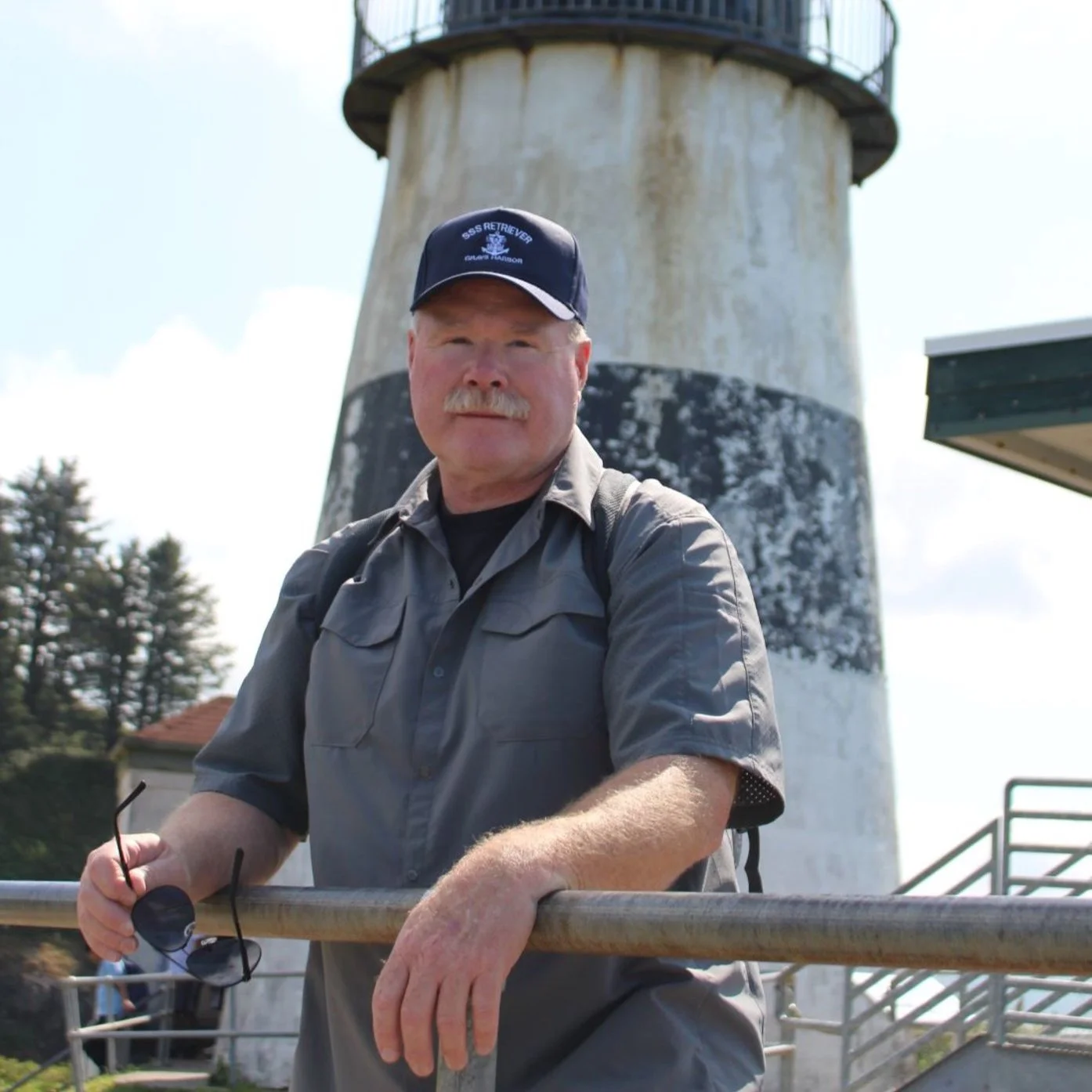The Lost Art of Weaving Metal
Captain Louis Summers, Westport, Washington
In a town still known for its flourishing fishing industry, gear sheds, and crab pot yards, one local shed is busy with traditional gear prep as the crabbing season is about to kick off in Westport, WA. Home to one of the last boat Captains who knits and repairs his crab pots with skills learned through a lifetime of crab fishing.
In preparation for the upcoming crabbing season, as he does every year, Captain Louis Summers deftly knits the sides and tops of his crab pots, not with yarn or line, but with stainless Monel wire. In a display of skill honed by years of building and repairing his gear, Louis weaves the stainless wire by eye and feel. He tells us it's also about keeping the pattern and the tension just right.
With his crew repairing the steel pot frames, rubber wrappings, and weights, Louis wraps and weaves the top, bottom and sides into the traditional diamond pattern using cradles and jigs he has developed for the task. Watching him work, the complexity of the commercial pots becomes evident. Every pot that is fished must comply with the rules, and Louis and his crew have prepped their 500 pots with the required pot I.D. tag, state-supplied tag, and colorful, unique line end buoys.
Ernie Summers, Louis' Uncle, headed the Crab Fishermen's Association for years and reported that Westport's Dungeness crab fishery dates to the 1920s. Small boats stayed in the harbor, dropped small ring nets over the side, and pulled them up to check them a short time later. In the 1930s or '40s, large, copper-framed pots wrapped in wire were introduced, and the catches were much more plentiful. It was then that the fishery moved from the bay to the ocean.
*Examples of these old copper pots are displayed in the Whale Building on the Grounds of the Westport Maritime Museum.
Louis Summers' shop is itself a museum of the local crabbing industry. The walls are covered with old floats and bait boxes in a visual progression of the industry's changes over the years. Hundreds of colorful crab buoys are freshly painted, marked, and ready to make their way into the pacific.
Captain Louis Summers has fished Westport his entire life. He's active in our community and is a Westport City Councilman. Louis and his crew of the F/V "Ethel May" work closely as a team. As he works weaving pots, he shares a lifetime of experience with his crew members, passing on the tradition of hand knitting and repairing the pots and ensuring that these skills are carried on into the next generation of crab fishermen.
About the Author
John Shaw is the Executive Director of the Westport South Beach Historical Society which operates the Westport Maritime Museum, Grays Harbor Lighthouse and the Furford Cranberry Museum.
He is a retired yacht builder with strong interests in Grays Harbors Maritime History. He also serves on Grays Harbors Marine Resource Committee and is Board Chair of the Aberdeen Museum of History.
Photography by Capture.Share.Repeat.





















